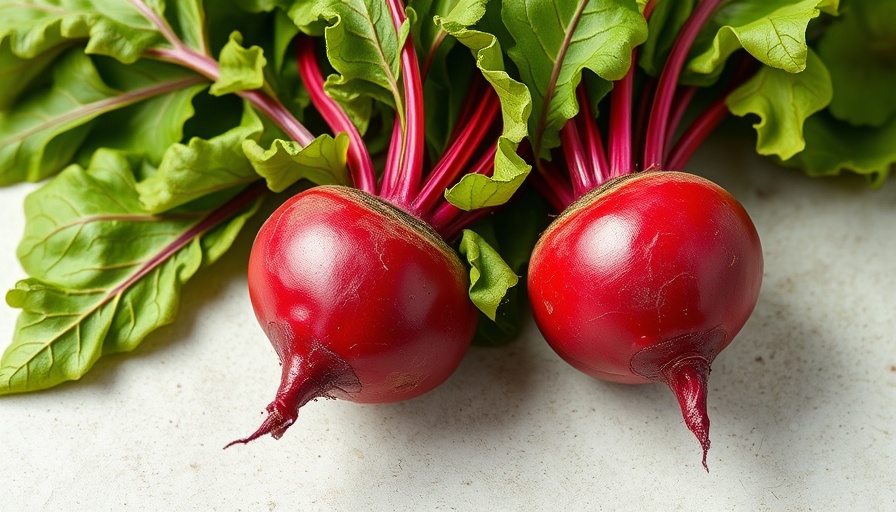
Understanding Powdery Mildew: The Hidden Garden Menace
Growing beets can bring joy and sustenance to your home garden, but they are not immune to pests and diseases. One of the most common yet misunderstood threats is powdery mildew, caused by the fungal pathogen Erysiphe spp. This article will guide you through identifying, controlling, and preventing this frustrating foe while ensuring your beet harvest thrives.
What You Should Know About Powdery Mildew
Powdery mildew is an obligate parasite, meaning it relies on a living host, like your beets, to survive and reproduce without killing it. This gives gardeners a fighting chance, as taking early action can control this disease effectively. The fungus prefers warm and dry weather, thriving at temperatures between 60 and 70 degrees Fahrenheit. If unchecked, powdery mildew can leave your beets looking more like sad golf balls rather than the vivid roots you anticipated.
Detecting the Symptoms Early
Recognizing powdery mildew symptoms early on is crucial for effective management. Initial symptoms often manifest as small, powdery spots on the underside of older leaves. As the disease progresses, the powdery coating expands, possibly leading to the browning and yellowing of leaves. This not only affects the visual appeal of your garden but can hinder photosynthesis, resulting in stunted growth and small roots.
Life Cycle of the Fungal Invader
Understanding the life cycle of the powdery mildew fungus can enhance your prevention and control strategies. The disease spreads most effectively under warm, dry conditions, so monitoring your local weather patterns can help. Over time, spores are produced and spread in the environment, increasing the likelihood of infection. Keeping your beets healthy and well-cared-for will provide them with the strength needed to fend off such diseases.
Proven Prevention Strategies
Fortunately, there are several effective methods for preventing powdery mildew from taking over your beets. Ensuring proper air circulation is fundamental, as overcrowded plants increase humidity levels, creating prime conditions for mildew growth. You can also consider using resistant plant varieties and maintaining good garden hygiene practices by regularly removing dead or infected plant material.
Organic Control Methods
If powdery mildew does make an unwelcome appearance, don’t fret! Many organic remedies can help combat the problem without resorting to harsh chemicals. Consider using a homemade spray made from water and baking soda, which can disrupt the fungal spores' life cycle. Additionally, introducing beneficial insects like ladybugs can help maintain a balanced ecosystem in your garden, reducing fungal infections.
Why It Matters: The Bigger Picture of Gardening
Dealing with powdery mildew is not just about aesthetics or yield; it’s a learning opportunity. Cultivating your own vegetables enhances self-sufficiency and fosters a deeper connection to the food you eat. You’ll gain insights on organic gardening practices, pest control methods, and how to grow in harmony with nature. Like any challenge in life, overcoming these obstacles can offer valuable lessons about resilience and nurturing.
Encouraging Community Sharing
As you navigate the complexities of gardening, consider sharing your experiences with others. Whether through local gardening clubs or social media platforms, your successes and struggles can inspire fellow gardeners and foster a sense of community. Expanding your network can bring invaluable advice, camaraderie, and support, enhancing your gardening endeavors.
Take the Next Steps Towards Healthy Beets
Now that you're equipped with the knowledge to identify and control powdery mildew in beets, why not put this information to use? Start implementing preventative methods today and keep an eye on your garden. The life lessons and nourishment from a thriving beet harvest await!
 Add Row
Add Row  Add
Add 




Write A Comment